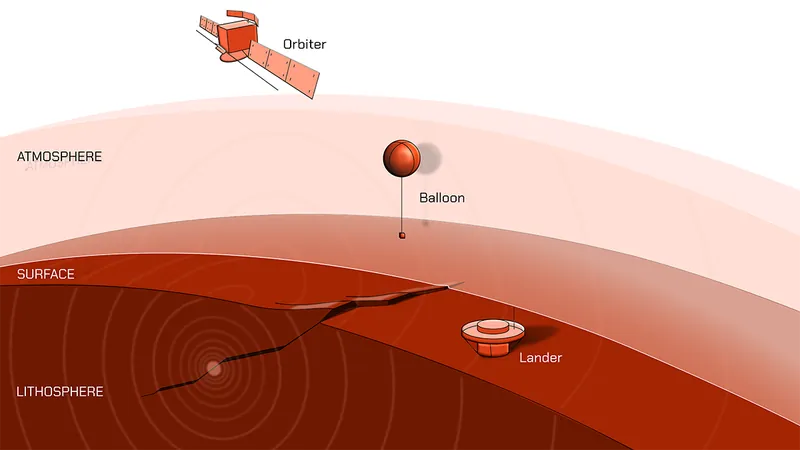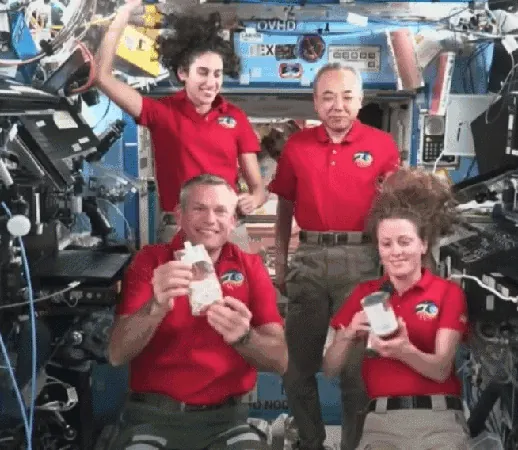
Unlocking Venus: Three Innovative Methods to Detect Venusquakes
2024-11-26
Author: Jia
Unlocking Venus: Three Innovative Methods to Detect Venusquakes
Venus, often called Earth's "sister planet," hides many secrets beneath its thick atmosphere, some of which could soon be revealed through groundbreaking seismic research. Unlike the Moon and Mars, where robotic landers have successfully tracked seismic activity, Venus presents unique challenges due to its harsh conditions—intense heat and corrosive clouds that make surface operations exceedingly difficult.
Recent research led by Garcia et al. showcases three promising methods for monitoring quakes on Venus: ground sensors, balloon-based sensors, and satellite-based instruments. Each method has its distinct advantages and challenges when it comes to tracking seismic activity on this inhospitable world.
1. Ground Sensors
Similar to those operating on the Moon and Mars, these sensors can detect seismic waves on the Venusian surface. However, due to Venus’s extreme surface temperature—averaging around 450°C (842°F)—these sensors are projected to last less than a day. Any successful mission would need to take this limitation into account.
2. Balloon-Based Sensors
Inspired by the Soviet Vega program, balloon sensors could remain airborne for several months, navigating Venus's dense atmosphere. Recent developments have shown that such technology can detect seismic waves on Earth, but these sensors are limited to detecting events with magnitudes between 4.0 and 4.5. Their durability and ability to survive in extreme conditions hold great potential for extending the duration of seismic studies on Venus.
3. Satellite-Based Instruments
These advanced tools offer an innovative solution by measuring airglow—light emissions from the upper atmosphere that are influenced by seismic waves. Satellite technology might not only detect Venusquakes similar to the other methods but can continuously collect data for many years, significantly increasing our understanding of seismic activity on Venus.
The authors suggest that integrating airglow measurements from satellites with balloon-based sensors could create a more comprehensive seismic monitoring system. This hybrid approach could enhance the accuracy of readings and lead to a clearer understanding of the geological processes at work on Venus.
Future missions will need to focus on improving noise models and gathering more data on the geographical distribution of quakes to better assess seismic risks on the planet. As scientists prepare for these groundbreaking missions, the promise of unraveling Venus's geological mysteries is closer than ever.
By leveraging innovative technologies, researchers are on the brink of discovering the mysteries that lie beneath Venus's scorching surface. Could this usher in a new era of planetary exploration? Stay tuned as we embark on a mission to uncover the secrets of our neighboring planet!



 Brasil (PT)
Brasil (PT)
 Canada (EN)
Canada (EN)
 Chile (ES)
Chile (ES)
 España (ES)
España (ES)
 France (FR)
France (FR)
 Hong Kong (EN)
Hong Kong (EN)
 Italia (IT)
Italia (IT)
 日本 (JA)
日本 (JA)
 Magyarország (HU)
Magyarország (HU)
 Norge (NO)
Norge (NO)
 Polska (PL)
Polska (PL)
 Schweiz (DE)
Schweiz (DE)
 Singapore (EN)
Singapore (EN)
 Sverige (SV)
Sverige (SV)
 Suomi (FI)
Suomi (FI)
 Türkiye (TR)
Türkiye (TR)